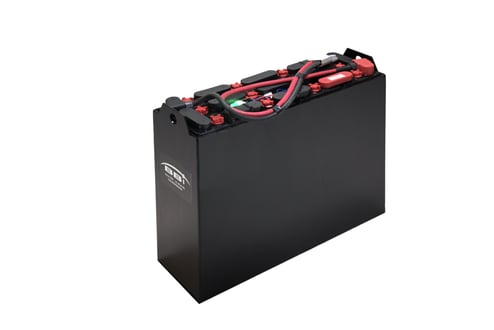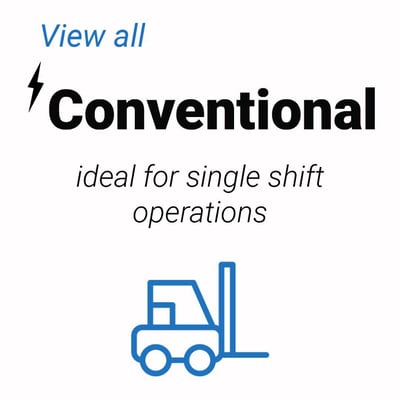
Maximizing ROI with Industrial Batteries
In today’s fast-paced industrial landscape, businesses are constantly seeking ways to improve efficiency, reduce costs, and enhance productivity. One often overlooked component that plays a crucial role in achieving these goals is the industrial battery. Whether it's powering forklifts, automated guided vehicles (AGVs), or other equipment, understanding how to maximize return on investment (ROI) with industrial batteries can lead to significant gains. This article dives deep into strategies for optimizing your investment in forklift batteries and other industrial battery solutions.
Maximizing ROI with Industrial Batteries
Investing in high-quality industrial batteries can be a game-changer for many businesses, particularly those relying heavily on material handling equipment like forklifts. But how can you ensure that your investment yields the highest possible return? Here are some key strategies:
1. Choosing the Right Type of Battery
When it comes to industrial applications, not all batteries are created equal. There are several types of forklift batteries available in the market today—lead-acid, lithium-ion, and more. Each battery type has its own advantages and disadvantages:
-
Lead-Acid Batteries: These are often the most cost-effective solution upfront. However, they require regular maintenance and have a shorter lifespan.
-
Lithium-Ion Batteries: While they may come with a higher initial price tag, lithium-ion batteries offer faster charging times, longer lifespans, and lower maintenance requirements.
Which type of battery should you choose?
The answer lies in your operational needs. If your business operates multiple shifts or requires quick turnaround times between charges, investing in lithium-ion technology may prove beneficial in the long run. On the other hand, if your operations are less demanding and you wish to keep costs down initially, lead-acid could suffice.
2. Implementing Preventive Maintenance
Just like any other piece of machinery, forklift batteries require proper care to extend their lifespan and maintain optimal performance levels. Here’s how you can implement preventive maintenance effectively:
-
Regular Inspections: Schedule routine inspections to identify any potential issues before they escalate into costly repairs or replacements.
-
Cleaning: Keep terminals clean and free of corrosion to ensure good conductivity.
-
Fluid Levels: For lead-acid batteries, regularly check fluid levels and top up with distilled water as necessary.
Why is preventive maintenance essential?
Preventive maintenance helps avoid unexpected downtime, reduces repair costs, and extends the life of your batteries—ultimately maximizing ROI.
3. Proper Charging Techniques
Charging practices have a significant impact on battery longevity and efficiency. Here’s what you need to consider:
-
Use Smart Chargers: Smart chargers adjust charging rates based on battery condition and state of charge.
-
Avoid Overcharging: Overcharging can cause excessive heat buildup and damage the battery cells over time.
-
Charge During Off-Peak Hours: If possible, charge during non-operational hours when electricity costs may be lower.
What’s the consequence of poor charging practices?
Neglecting proper charging techniques can decrease battery life and efficiency significantly—leading to increased replacement costs that hurt your overall ROI.
4. Training Staff on Best Practices
Even the best equipment won’t yield optimal results without properly trained operators behind the wheel. Regularly train staff on best practices for using forklifts and managing battery systems:
-
Safe Operation: Ensure operators understand how to use equipment safely while minimizing stress on the battery.

-
Battery Management: Educate employees about charging cycles and maintenance checks that need to be performed throughout their shifts.
How does training affect ROI?
Well-trained staff minimize errors that could lead to unnecessary wear-and-tear on batteries. This proactive approach prolongs battery life while ensuring smooth operations—all contributing positively towards ROI.

Understanding Costs Associated with Forklift Batteries
When considering forklift batteries as part of your operational expenses, it’s essential to understand all associated costs—beyond just initial purchase prices:
| Cost Type | Description | |---------------------|--------------------------------------------------| | Initial Purchase lead-acid forklift batteries | The upfront cost of buying new forklift batteries | | Maintenance | Ongoing costs for upkeep (cleaning fluids etc.) | | Replacement | Costs incurred when a battery reaches its end-of-life | | Energy Consumption | Costs associated with charging (electricity bills) |
These factors play a critical role when calculating total cost of ownership (TCO), which directly influences your overall forklift batteries ROI calculations related specifically to forklift operations.
Maximizing Efficiency with Advanced Battery Technologies
As technology continues evolving at breakneck speeds across industries worldwide—including advancements in energy storage solutions—it becomes increasingly important for organizations aiming for greater efficiencies via modernized infrastructure investments within their facilities!
1. Embracing Automation
Automation is revolutionizing industries by streamlining processes while reducing human error exposure rates significantly; this applies equally well concerning utilizing advanced industrial battery technologies!
For instance:
-
Automated Guided Vehicles (AGVs) powered by intelligent lithium-ion systems optimize materials handling tasks efficiently.
-
Real-time monitoring software provides insights into usage patterns enabling smarter decisions about deployment strategies around existing fleets too!
This integration ultimately leads toward 24 volt flat plate forklift batteries improved productivity levels across various sectors – driving down operational expenses over time thereby enhancing profitability margins considerably!
2. Investing in Battery Management Systems (BMS)
Battery Management Systems (BMS) are vital tools for improving performance metrics concerning not only individual units but entire fleet management practices overall!
Benefits include:
-
Monitoring health status continuously allowing timely interventions whenever necessary.

-
Data collection facilitating predictive analytics ensuring proactive rather than reactive approaches concerning asset management routines locally!
What do these systems translate into?
Enhanced safety protocols alongside optimized resource allocations translating smoothly into impressive returns on investments made earlier regarding upgrading infrastructure capabilities accordingly!
FAQs
1. What types of industrial batteries are used for forklifts?
Forklift applications commonly utilize lead-acid or lithium-ion batteries due to their performance characteristics suited for heavy-duty use cases.
2. How often should I maintain my forklift batteries?
Routine checks should occur monthly; however more frequent inspections might be warranted based upon operational intensity experienced during peak seasons!
3. Can I replace lead-acid with lithium-ion without changing equipment?
Most modern forklifts equipped with adaptable interfaces allow swapping out older technologies seamlessly—but always consult manufacturer recommendations beforehand!
4. How can I extend my industrial battery's lifespan?
Implementing preventive maintenance measures alongside proper usage training will significantly help prolong longevity while maintaining performance levels effectively!
5. Are there financial incentives for transitioning toward advanced technologies?
Yes! Many governments offer rebates/tax credits aimed at promoting sustainable practices which could offset initial investment costs considerably!
6. What signs indicate it's time for a replacement?
Decreased runtime performance coupled with diminished capacity readings during testing generally indicates an immediate need replacing aging units promptly before disruptions occur impacting productivity negatively!
Conclusion
Maximizing ROI with industrial batteries is no small feat; it requires strategic planning combined with ongoing investments geared towards education/training initiatives alongside technological upgrades tailored specifically around emerging market trends carefully analyzed throughout respective sectors involved! By choosing appropriate types/models fit-for-purpose initially then incorporating robust maintenance protocols along real-time data tracking solutions amid automation efforts—you’ll find yourself reaping benefits galore!